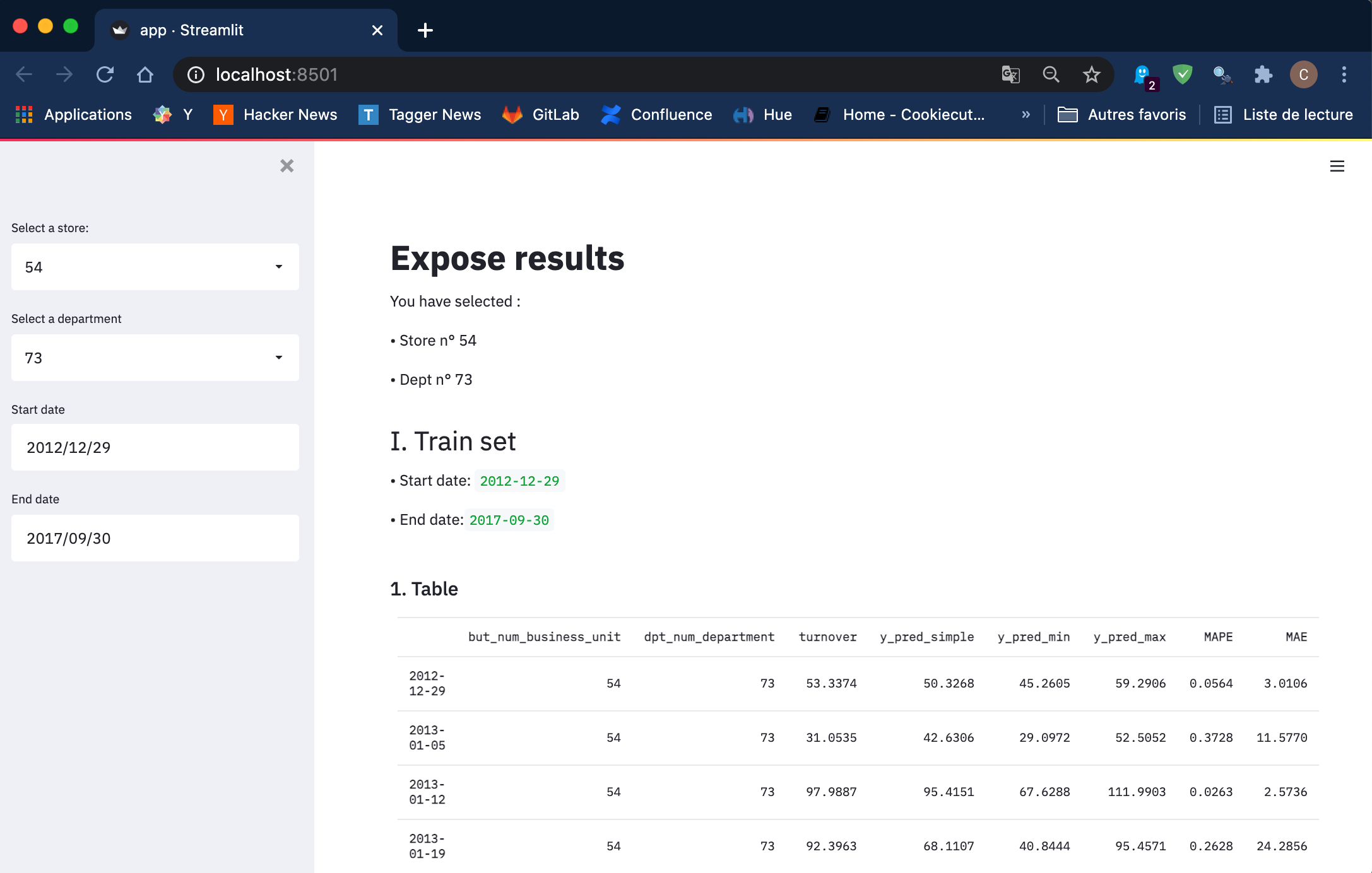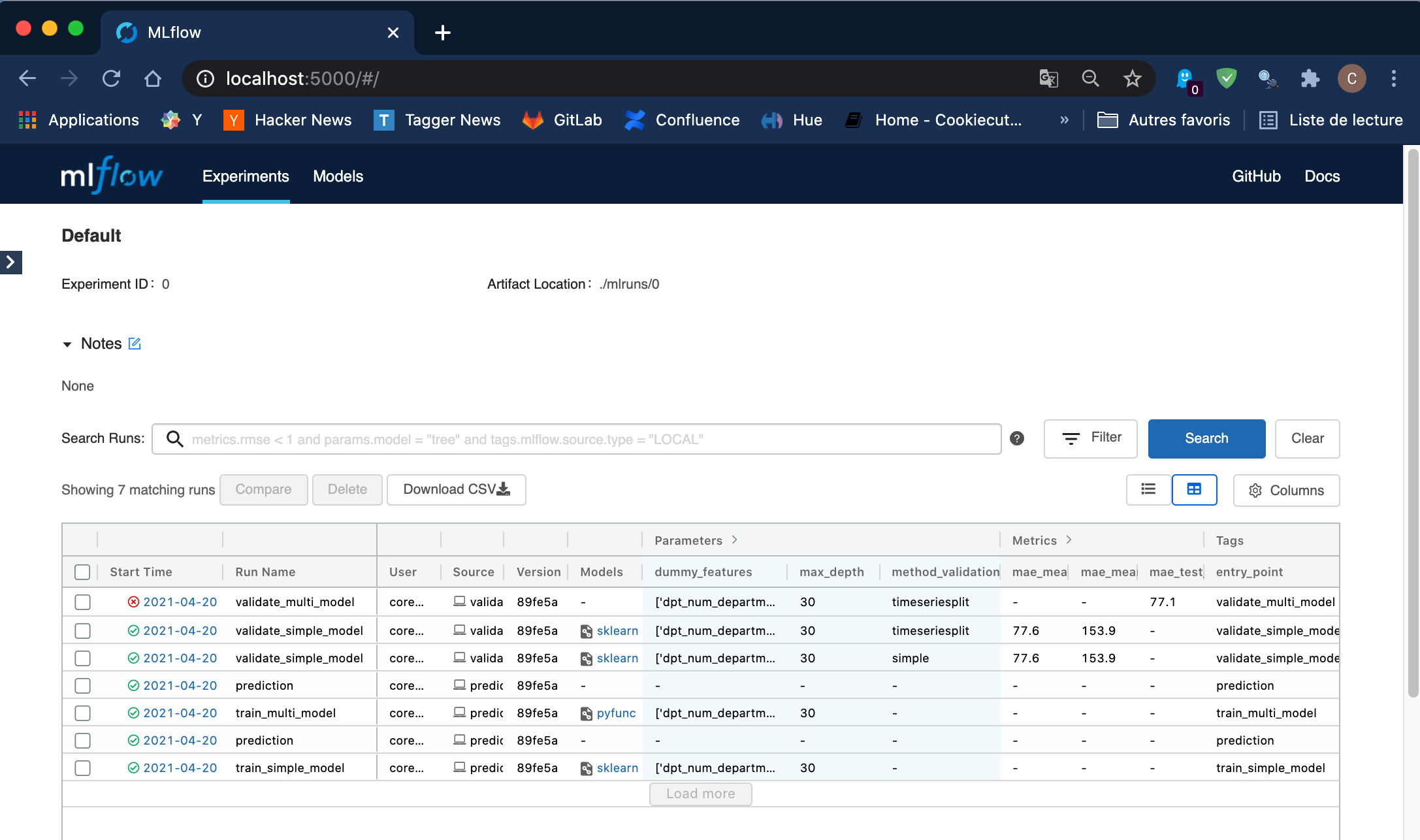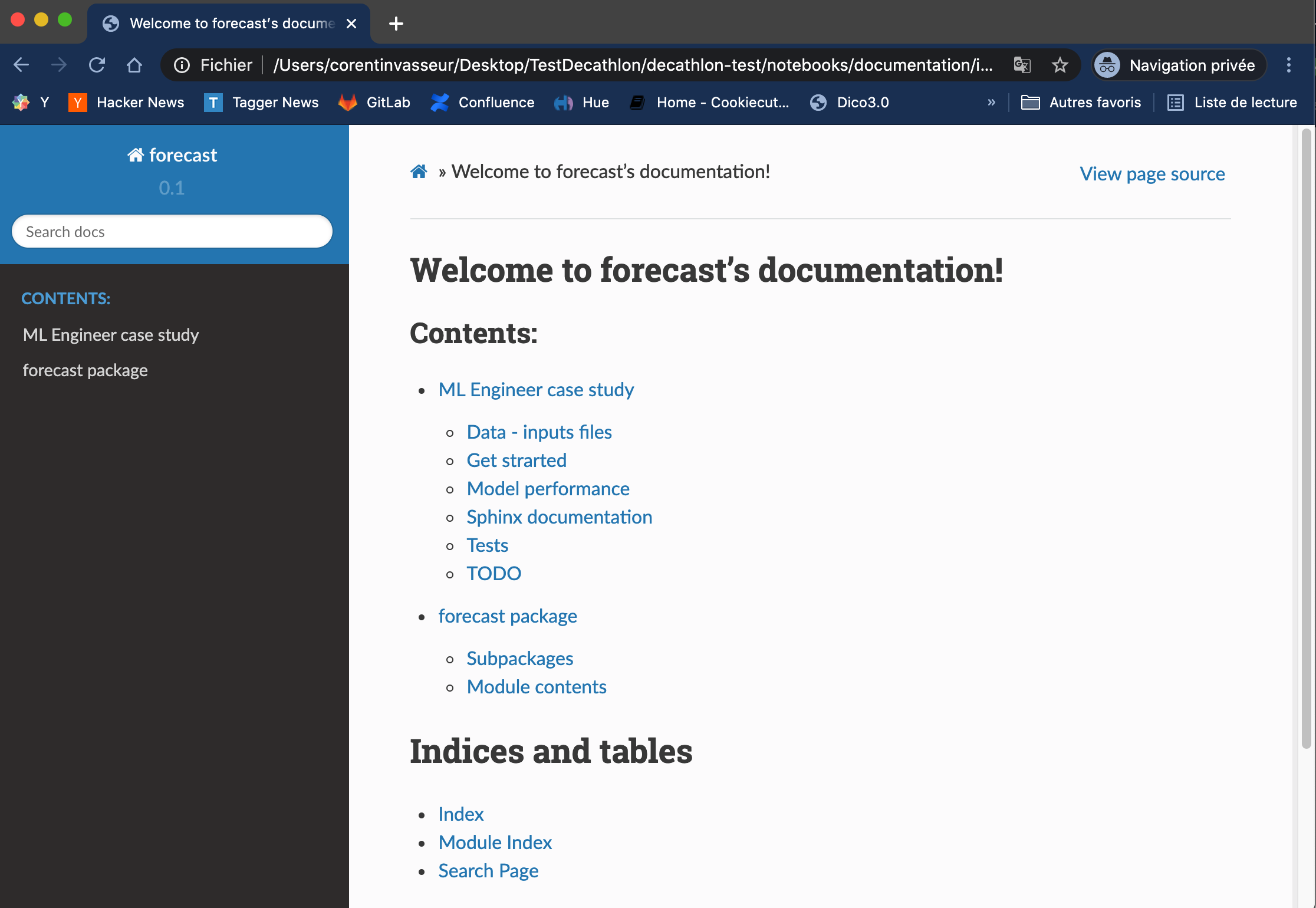train.csv.gz & test.csv.gz files contain weekly store-department turnover data (test.csv.gz does not contain the turnover).
bu_feat.csv.gz file contains some useful store information.
Raw data (train.csv, test.csv and bu_feat.csv) have been located in data/raw directory.
Data preprocessing will be stored in data/preprocessing and results in data/results (cf. code structure section)
Firstly you can create a virtual env. The following command lines allow you to create it with python3.8 (.venv) and activate the environment :
$ python3.8 -m venv /.venv
$ source activate.sh
Now you need to set up the virtual environment. Install the project's requirements thanks to this command:
$ pip install --upgrade pip
$ pip install -r requirements.txt
In order to use this environment in jupyter, you can link it thanks this command :
$ python -m ipykernel install --user --name=decathlon-env
2 notebooks have been created :
- 01 - Preliminary questions & data exploration.md (preliminary question) and
- 02 - Forecast model.md (forescast model explanation).
There are located in the notebooks/myexperiments directory.
To generate .ipynb files from .md, you can use this command (jupytext):
$ make notebooks
Then, you just have to launch jupyter notebook :
$ jupyter notebook
In order to visualize the results (predictions made), a streamlit application have been developed. This command line allow you to run the streamlit web application (based on the output of notebooks).
$ make run-webapp
A ML pipeline have been develop and configured with MLflow in order to track model performance and to save models and reuse it on other test set.
To launch the entire pipeline (validate and prediction) you can use this command:
$ make pipeline
If necessary, you can use "make pipeline-validate" command (to track model performance on train set and test set) or "make pipeline-prediction" command (to train model on the entire train set and to make predictions on test set).
This command launchs mlflow application for tracking algorithm performances:
$ make mlflow-ui
If you want to make prediction on a new data set by using a model already train, copy the new test.csv in data/new directory (have to be created).
Collect the logged_model in mlflow web application and run this script :
$ python forecast/application/prediction_utils.py
Project has a sphinx documentation. To generate it use this command :
$ make doc
Documentation of forecast project can be found here : notebooks/documentation.
├── coverage
├── data
│ ├── raw <- Raw data
│ ├── preprocessing <- Intermediate data that has been cleaned and transformed.
│ └── results <- Data output of modelling (prediction for example)
├── doc <- Sphinx documentation of forecast project
├── forecast
│ ├── application <- Launch project in command line
│ ├── domain <- Core of project (Data preparation, feature engineering, ML algorithm)
│ ├── infrastructure <- Connect to data sources
│ ├── interface <- Expose results
│ └── settings
├── notebooks
│ ├── images <- Schema for explanation (e.g. multimodel)
│ └── myexperiments <- Directory containing notebooks.
├── tests <- tests (units tests, data tests)
├── .gitlab.yml <- CI/CD gitlab
├── activate.sh <- Bash script for activating virtual env
├── Makefile <- Makefile with user friendly commands such as `make doc` or `make run-webapp`
├── README.md <- The top-level README for developers using this project.
└── requirements.txt <- The requirements file for reproducing the python environment
TODO: not implemented yet
TODO: not implemented yet
- intelligibility (pdb, ice, lime, shape)
- tests (units, data)
- mlflow (get_run implementation)
- CI/CD



